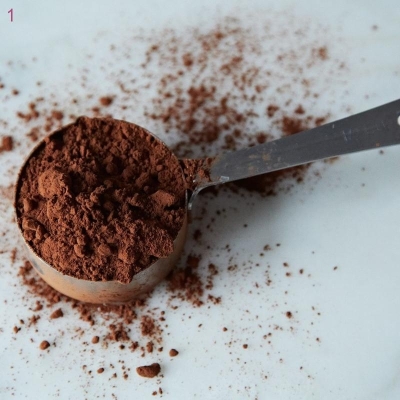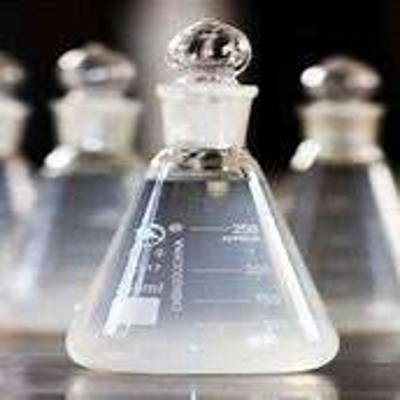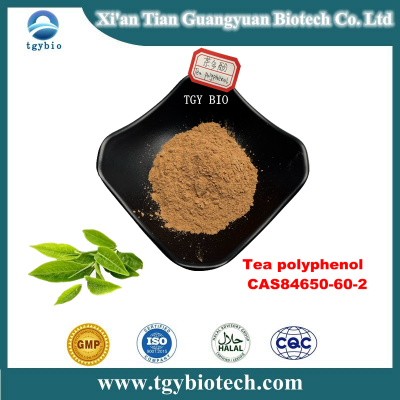Discussion on the development of food colorants at home and abroad
-
Last Update: 2005-02-21
-
Source: Internet
-
Author: User
Search more information of high quality chemicals, good prices and reliable suppliers, visit
www.echemi.com
Over the years, the total output value of the food industry has always been among the top in the world's industrial output value, as has been the case in China It is reported that the total output value of the food industry in China has exceeded 1 trillion yuan at present, and it was 1239.085 billion yuan in 2003, accounting for 10% of the GDP Because of the rapid development of food industry and catering industry, as an indispensable food additive in food processing and catering industry, it has also obtained better development environment and conditions Therefore, the food additive industry plays an important role in the food industry It can be said that the development of modern food industry is inseparable from the food additive industry In recent years, the foreign food additive market has developed rapidly According to the latest statistical information, the global food additive market scale is about 20 billion US dollars, with an annual growth rate of 2.5-4% Among them, the United States, Europe and Japan are the most important markets for food additives in the world, with an annual output value of about 14 billion US dollars, including 5 billion US dollars in the United States and 4 billion US dollars in other developing countries With the development of food industry, there are various requirements for food additives, and the development of food additives in China has been booming By 2003, 1674 kinds of food additives had been approved for use in China, including 1167 kinds of flavors The output is about 2.9 million tons, the output value is about 30 billion yuan, 20% higher than that in 2002, and the export income is 800 million US dollars, 14.2% higher than that in 2002 Through years of fierce competition and structural adjustment, China's food additive industry began to operate on a large scale, with relatively concentrated production, improved quality, reduced cost and significantly improved competitiveness As a food additive, food colorant is an important raw material mainly used to improve the appearance and quality of food In the consumption of edible pigment in the world, the development of each country and region is also different, among which the United States accounts for 40%, which is a big consumer of edible colorant According to the FDA of the United States, 5000 tons of FD & C legal food colorants, including the pigments used in medicine and cosmetics The proportion of edible pigments in the final food market: 29% for alcoholic beverages, 15% for pet food, 13% for candy, 12% for other food uses, 9% for dessert powder, 9% for baked food, 5% for cereal products, 5% for daily products and 3% for sausage products Edible pigments can be divided into natural substances (natural extraction and biosynthesis) and artificial chemical synthetic pigments In Germany, the use of synthetic pigments is twice that of natural pigments, but in Japan, the use of synthetic pigments is less than one tenth of that of natural pigments In recent years, with the continuous improvement of the consumption of food additives and the level of consumption, the consumption of food colorants in China is also growing rapidly At present, although the annual consumption of synthetic colorants in China is about 2500-2800 tons, the annual consumption per capita in China is only about 2G, which is far from the average annual consumption of 10-20g in developed countries In recent years, natural pigments have developed rapidly in China, but it is difficult to make accurate statistics because of the different prices and specifications of various commodities In a word, the development of food colorants in China is very fast, and there is a lot of room for future development 1、 With the rapid development of science and technology and food industry, and the increasing awareness of consumers on food safety, the research and development trend of edible pigments put forward higher requirements for the quality of edible colorants The research and development of edible pigment (including synthesis and nature) involves a wide range of disciplines, and its research, production and application mainly involve chemistry, bioengineering, chemical engineering, food engineering and toxicology The development and quality improvement of edible pigment products need mutual penetration and cooperation of the above disciplines Around the development and application of food pigment, domestic and foreign scientists have carried out many research work 1 New product development and research: due to the limitations of new product development of synthetic food colorants, such as the particularity in toxicity research and development, it is difficult to develop new varieties like other dyes According to the relevant laws and regulations of food hygiene, it is necessary to confirm the safety of new resources and new products of colorant by toxicology test It has been estimated that the cost of new synthetic food colorants from development to market is up to several million pounds, which is not affordable for general manufacturers In addition, the current market entry, whether monochromatic or multicolor, can basically meet the needs of food coloring Therefore, there are few new products in the world at present The latest varieties should promote allure red and its color Dian series of varieties, which are also from the late 1960s to the early 1970s In recent years, foreign countries are committed to the development of macromolecular polymer synthetic pigment The relative molecular weight of this kind of polymeric pigment is 30000 to 130000 This kind of pigment is not active in physiology, and it can hardly be absorbed by isotope labeling It can be absorbed into the human body and discharged from the intestines without harm to the human body It can be applied to many kinds of food coloring In addition, manufacturers at home and abroad focus on Application Research and development In addition to improving the quality of existing products, they also make articles on different preparations and derivatives of these pigments to meet the different requirements of users in terms of hue, performance, etc 2 Chemical composition research: whether it is synthetic or natural pigment, the main task is to find out the structure, properties, functions and safety of the main ingredients The key to the study of chemical components lies in the separation, purification and identification of pigment, which provides basis for the purification, classification and application of edible pigment In recent years, the application of new technology of chemical separation and purification has made breakthroughs in the separation and purification of complex pigment components (especially in natural pigments), such as droplet counter current chromatography, macroporous resin adsorption chromatography, gel chromatography and high performance liquid chromatography In the aspect of chemical structure identification, the application of advanced instruments such as high magnetic field nuclear magnetic resonance and liquid phase mass spectrometry and new chromatography technology has made great progress in the detection and research of the main and secondary chemical structures of pigment 3 Research on physical and chemical properties: provide basis for refining, production, detection and application of food pigment The physical and chemical properties of pigment involve the formation, change, reaction kinetics of pigment and the interaction between pigment and other additives The influence of light, heat, metal ions, microorganism and food matrix on pigment and spectral characteristics In recent years, the mechanism of pigment stabilization, coloration, discoloration and fading has been studied by advanced means in foreign countries It is a noticeable research direction to reveal the physical and chemical properties of pigment at the molecular level 4、 Detection of food pigment: qualitative and quantitative detection of pigment is the basis for the determination of the physical and chemical properties of pigment, as well as the basis for food hygiene detection Qualitative detection is generally confirmed by the characteristics of chromatography, spectrum and chemical reaction; quantitative detection is generally determined by colorimetry, and appropriate colorimetric conditions need to be selected The detection of pigment used in food is an important part of food hygiene supervision 5 Research on new pigment Technology: in the production process of pigment synthesis, refining and drying, high and new technologies (such as membrane separation technology and supercritical carbon dioxide extraction technology) are used for process selection, parameter optimization, equipment design and manufacturing to improve production capacity and efficiency, improve process stability, reduce energy consumption and cost, and realize the continuity and self-reliance of production process It is the goal of pigment manufacturers to achieve the requirements of GMP by means of motility and cleanness The application of membrane separation technology is a new separation technology in chemical industry, food industry and pharmaceutical industry It uses polymer membrane materials to separate and purify effective components from liquid Compared with the traditional purification method, it has the advantages of reducing cost, shortening working hours and reducing pollution The disadvantage is that the equipment investment is large At present, domestic and foreign manufacturers have used this technology to produce edible pigment products 6 Research on the application of edible pigment: application scope, use mode, compound application, color matching and coloring effect, providing basis for the popularization and application of pigment Due to the complexity of natural pigment composition, there are many problems in the application of natural pigment With the development of preparation technology and application technology, the above problems are gradually solved The research on the seriation, matching, classification and application guidance of natural pigment makes the application of natural pigment more scientific and convenient Edible pigment is not only used as coloring Application Research of food, but also used in high value-added drugs and cosmetics It has a broad market prospect 7 Toxicological research: in recent years, in addition to a large number of toxicological research work on synthetic colorants, the United States has conducted toxicological reevaluation on the currently used pigments, and conducted in-depth research on the formation and determination of intermediate residues and paradyes of synthetic food colorants Japan also controls the content of intermediate residues and impurities in synthetic food colorants In order to ensure the safety of food colorants, countries all over the world are committed to improving the purity of synthetic food colorants Before, the content of synthetic pigments in common use in the world was controlled at more than 85%, and the content of national standards in the past was 85%, 60% At present, when revising the national standards for synthetic pigments, the content of 60% specification has been gradually cancelled, and the content of 85% specification has been retained, in order to connect with international standards Rail 2、 As we all know, the safety and stability of food pigment, whether it is food or food additives, whether it is synthetic or natural food pigment, has always been the focus of attention at home and abroad A large number of tests are needed to provide a large number of reliable data before each food pigment is approved Their safety is evaluated by a comprehensive method The evaluation procedures vary from country to country, but they are mainly based on the toxicity of breeding animals, toxicological test data, chemical structure, property, purity, impurities and stability of the pigment used As early as in the 1980s to the early 1990s, a large number of toxicological studies reported that the existing synthetic food colorants have been repeatedly tested in animals and reevaluated in toxicology Among them: amaranth, carmine, red moss, lemon yellow, bright blue, indigo, temptation red, etc In 1994, the World Health Organization and the food additive Expert Committee (JECFA) of the food and Agriculture Organization of the United Nations also published the toxicological evaluation results of some colorants, and accordingly put forward the ADI value (that is, the maximum allowable daily intake of human body) According to the hygienic standard for the use of food additives (GB2760), 22 kinds of synthetic food colorants and their permitted use range and amount are also the basis of this evaluation result Therefore, it is safe and reliable to use these 22 kinds of synthetic colorants in the maximum limit of use Synthetic pigment has the advantages of bright color, good stability, suitable for color matching and compounding, and low price It is not only the main colorant used in food and beverage industry in China, but also widely used in medicine and cosmetics industry Natural pigments, which are different from synthetic pigments, are mainly extracted from animal and plant tissues It is undeniable that some edible natural pigments are generally safe for human body, some of them have certain nutrition, even certain pharmacological and physiological activities At present, the development of natural pigment, using natural pigment instead of synthetic pigment has become the development trend of food and cosmetics industry However, due to natural pigments
This article is an English version of an article which is originally in the Chinese language on echemi.com and is provided for information purposes only.
This website makes no representation or warranty of any kind, either expressed or implied, as to the accuracy, completeness ownership or reliability of
the article or any translations thereof. If you have any concerns or complaints relating to the article, please send an email, providing a detailed
description of the concern or complaint, to
service@echemi.com. A staff member will contact you within 5 working days. Once verified, infringing content
will be removed immediately.







